Results 10,291 to 10,300 of 12094
Thread: Anandtech News
-
01-30-20, 05:28 PM #10291
Anandtech: ASRock’s X570D4I-2T: A Mini-ITX AMD X570 Motherboard with Intel’s 10 GbE C
ASRock Rack has revealed a rather interesting Mini-ITX motherboard for AMD’s Ryzen 2000 and 3000-series processors with Intel’s X550 10 GbE controller. The X570D4I-2T platform can be used both for high-performance desktops and for small form-factor servers/NAS with robust storage capabilities.
The ASRock Rack X570D4I-2T motherboard is based on AMD’s X570 chipset and supports all the latest AMD Ryzen 2000/3000-series processors with up to 16 cores and a 105 W TDP. The platform has four DDR4 SO-DIMM slots supporting up to 64 GB of DDR4-2400 memory with or without ECC, one PCIe 4.0 x4 slot for graphics cards (when used with an appropriate CPU), one M.2-2280 slot supporting PCIe 4.0 x4 or SATA SSDs, and two OCulink connectors that bring support for eight SATA 6 Gbps ports (controlled by the X570). Since the Mini-ITX motherboard can be used for servers, it also carries the ASpeed AST2500 BMC.
On the I/O side of matters, the ASRock Rack X570D4I-2T has two 10 GbE ports (controlled by the Intel X550-AT2), a GbE port for remote management, two USB 3.1 Gen 1/2 (depends on redriver) Type-A connectors, one USB 3.1 Gen 1 header for front panels, and a D-Sub display output.
The choice of the 10 GbE controllers may seem a bit odd since we are talking about an AMD-based motherboard, but it looks like ASRock Rack originally developed the X570D4I-2T for a particular customer that required an Intel NIC, but wanted to take advantage of AMD’s latest desktop platform. In fact, the latter does have a unique set of features not available elsewhere: a support for a 16-core (reasonably priced) CPU, eight SATA ports, and 20 PCIe 4.0 lanes. Using the X570D4I-2T, it is possible to build an extremely advanced desktop PC with discrete graphics card and vast storage capabilities, or a small form-factor server/NAS featuring 128 TB of SATA storage and terabytes of ultra-fast NVMe storage that can be accessed using 10 GbE ports.
The ASRock Rack X570D4I-2T motherboard is now listed at the company’s website, so expect it to be available shortly. Considering all the peculiarities of the platform, it is hard to tell whether this one will be available widely in retail (if at all), but at least it can be ordered directly from the company.Brief Specifications of ASRock's X570D4I-2T X570D4I-2T CPU AMD Ryzen 2000 and 3000-series CPUs with up to 105 W TDP PCH AMD X570 BMC ASpeed AST2500 Memory 4 × SO-DIMM slots, up to 64 GB of DDR4-2400 Storage M.2 1 × M.2-2280 SSD with SATA or PCIe 4.0 x4 interface SATA 8 × SATA HDDs or SSDs Wi-Fi - WWAN - Ethernet 2 × 10 GbE connectors (Intel X550-AT2)
1 × GbE (Realtek RTL8211E)Display Outputs 1 × D-Sub Audio - USB Internal 1 × USB 3.0 External 2 × USB 3.1 Gen 1/2 Type-A Additional I/O - Power 8-pin (DC-IN) + 4-pin (ATX) + 4-pin (HDD PWR) Temperatures Operating 10°C ~ 35°C Storing -40ºC – 70°C OS Windows, Linux
Compatible with other operating systems
Related Reading:
- The ASRock X470 Taichi Ultimate Motherboard Review: Aquantia 10GbE on Ryzen
- MSI at CES 2018: Updated GT75VR Gaming Laptop Receives Killer (Wireless-AC 1550) Upgrade
- LR-Link Launches Intel X550-Based 10 GbE NICs: Starting at $155
Source: ASRock Rack (via Hermitage Akihabara)
More...
-
01-30-20, 05:28 PM #10292
Anandtech: EKWB Releases New Closed-Loop EK-AIO Cooling Systems w/RGB
Historically, EKWB has been best known for its custom, open-loop liquid cooling systems designed for experienced enthusiasts. But as closed-loop factory-assembled cooling systems are increasingly popular among many DIYers, EKWB has also previously branched out into its modular EK-MLC Phoenix coolers, which combine ease-of-assembly and ability to customize them. Now, to cater to even more mainstream audience that tends to use prêt-à-porter coolers, EKWB is unveiling a new lineup of all-in-one coolers, the EK-AIO family.
EKWB’s EK-AIO lineup of liquid coolers that require no assembly or maintenance consists of three models: the EK-AIO 120 D-RGB, EK-AIO 240 D-RGB, and EK-AIO 360 D-RGB. The cooling systems use a water block featuring an SPC- style pump as well as a copper cold plate. As the names of the coolers suggest, the devices come with either a 120-mm radiator with one EK Vardar fan, a 240-mm radiator with two fans, or as a 360-mm radiator with three fans. The radiators have 12 channels to maximize cooling efficiency and are 28 mm thick to be compatible with the vast majority of modern PC cases.
In line with modern trends, EKWB’s EK-AIO family of coolers are lit with addressable RGB LEDs that can be controlled using software from leading motherboards makers. The LEDs are located inside the water block and under the motor hub of fans creating rather interesting effects.
As far as compatibility is concerned, EKWB’s EK-AIO come with mounting kits supporting modern AMD’s AM4 and similar sockets (so, no sTR4) and Intel’s LGA1155 as well as LGA2066.
EKWB’s closed-loop EK-AIO 120 D-RGB, EK-AIO 240 D-RGB, and EK-AIO 360 D-RGB coolers will be available starting February 28. The cheapest model with a 120-mm radiator is priced at €74.9, the mid-range SKU costs €124.9, whereas the highest-end flavor with a 360-mm radiator and three fans carries an MSRP of €149.9. All units are covered with a five-year warranty.
Related Reading:Specifications of EKWB's EK-AIO D-RGB Cooling Systems General Specifications Fan (single) Speed (RPM) 600 - 2,500 ± 10% RPM Airflow (CFM) up to 89 CFM Static Pressure (mm-H2O) up to 4.3 mm-H2O Noise (dBA) up to 38.4 Power ? W MTBF (hrs) ? @ unknown oC Connector 4-pin PWM connector Pump Speed (RPM) 450 – 2,600 ± 300 RPM Life Expectancy ? @ unknown oC Power ? W Tubing Length 300 mm Compatibility AMD AM4, AM3+, AM3, AM2, FM2+, FM2, FM2+, FM1 Intel LGA 1151, 1150, 1155, 1156, 1366, 2011, 2011-3, 2066 TDP various
- EKWB Announces EK-MLC Phoenix AIO: Modular and Expandable Liquid Cooling Family
- NZXT Unveils Kraken X-3 and Kraken Z-3 Series Closed-Loop CPU Coolers
- EKWB Releases New Hard Tubing Series Watercooling Kits
- EKWB Reveals Velocity: A Water Block for Custom LCS with RGB Lighting
- EKWB EK-Velocity sTR4: EK’s 3rd Gen Water Block for AMD’s Threadripper
Source: EKWB
More...
-
01-30-20, 07:42 PM #10293
Anandtech: Western Digital and Kioxia Announce BiCS5 112-Layer 3D NAND
Western Digital and Kioxia have announced the successful development of their newest generation of 3D NAND flash memory. Their fifth-generation BiCS 3D NAND has commenced production in the form of a 512 Gbit TLC part, but will not ramp up to "meaningful commercial volumes" until the second half of the year. Other parts planned for this generation include 1Tbit TLC and 1.33 Tbit QLC dies.
The BiCS5 design uses 112 layers compared to 96 for BiCS4. BiCS5 is the second generation from WDC/Kioxia to be constructed with string stacking, and is probably built as two stacks of about 56 active layers each. Even though 112 layers is only a ~16% increase over the previous generation, the companies are claiming a density increase of up to 40% (comparing 112L 512Gb TLC against 96L 256Gb TLC, by bits per wafer), thanks to other tweaks to the design that allow for shrinking horizontal dimensions. The density of the memory array itself is said to be about 20% higher. The memory interface speed has been increased by 50%, which should put it at 1.2GT/s, on par with most of the 96L competitors.
BiCS5 parts will begin sampling this quarter. With production ramping up in the second half of the year, SSDs and other products using BICS5 will likely hit the market around the end of 2020 at the earliest. Western Digital has previously stated that they intended for the BiCS5 transition to require lower CapEx than the 64L to 96L transition, reversing the trend of steadily more expensive generational updates. This means that the migration to 112L will probably be even slower than the last transition, and 96L BiCS4 will be a major part of their production volume for quite a while.
More...
-
01-31-20, 12:13 PM #10294
Anandtech: Western Digital Roadmap Updates: Energy Assisted Recording, Multi-Stage Ac
Between CES at the beginning of the month, a series of presentations at Storage Field Day last week and a quarterly earnings report this week, we've heard from just about every division of Western Digital about their latest priorities, strategy and roadmaps. Here are the highlights.
Hard Drive Tech: Energy-Assisted Recording, Improved Actuators and Suspension
Western Digital's development of hard drive technology is advancing on several fronts to push the limits of their high-capacity enterprise HDDs. Helium is old news, and used in all their drives larger than 10TB. Lately, the most attention has been focused on Heat Assisted Magnetic Recording (HAMR) and Microwave Assisted Magnetic Recording (MAMR), both of which fall under the heading of energy-assisted recording. Western Digital is still a few years away from deploying either HAMR or MAMR, but their upcoming generation of hard drives takes the first steps in that direction.
This year, WDC is starting to deliver their latest generation of high-capacity enterprise hard drives which were announced in 2019: the 16TB and 18TB Ultrastar DC HC550 and the 20TB Ultrastar DC HC640 with shingled magnetic recording (SMR). All of these new models will feature WDC's first energy-assisted recording technology which they have dubbed ePMR. This is still a fairly ill-defined transitional feature, but it is based on some of the parts needed to implement MAMR. WDC's roadmaps have them sticking with ePMR for a few more years before fully implementing either HAMR or MAMR technology.
The technology to position hard drive heads has also been improving. The new generation of capacity enterprise HDDs will be Western Digital's first to use three-stage actuators for faster and more precise seeks. Very roughly, this is akin to giving the arms elbow and write joints. This is not to be confused with multi-actuator drives that allow the heads for some platters to move independently from the heads for other platters. Seagate has been making more noise about dual-actuator hard drives and their potential to significantly improve the IOPS/TB figures that have been in decline, but Western Digital is also working on multi-actuator drives—they just haven't shared plans for bringing them to market.
3D NAND: Price And Layer Count Rising
The flash memory side of Western Digital is currently focused more on delivering incremental improvements rather than introducing major technological changes. Low flash memory prices in 2018 and 2019 caused WDC and competitors to take it slow during the 64L to 96L transition, and WDC planned to make the next generation less capital-intensive after several generations of increasing transition costs.
Demand for flash memory has now caught up with supply and is expected to significant outgrow supply later this year, in part due to the CapEx cuts across most of the industry. Western Digital doesn't expect to significantly increase their wafer output this year, but as they transition to BiCS5 that will help increase bit output somewhat. Western Digital and Kioxia have brought online their new K1 fab in Kitakami, Iwate prefecture, Japan, joining their several fabs in Yokkaichi, Mie prefecture. However, for now the extra fab capacity simply gives them the slack necessary to transition other fabs to BiCS5 and it is not yet helping increase total wafer output.
The fifth generation of Western Digital/Kioxia BiCS 3D NAND has now officially been revealed as a 112 layer design, a modest 16% increase in layer count over the 96-layer BiCS 4. The two companies have been working to also improve density in several ways other than increasing layer count, so the memory array density of BiCS5 is more like a 20% improvement over BiCS4—still not exactly revolutionary. Western Digital and Kioxia have started limited production and sampling of BiCS5 parts, but BiCS4 is still the overwhelming majority of their NAND bit production and BiCS5 won't start ramping up seriously until the second half of 2020.
Consumer Storage: WD_BLACK for Gamers
Western Digital's consumer strategy seems to be mostly business as usual: nothing interesting is happening with their SATA products, and their consumer NVMe drives might not see any further updates until they move to PCIe 4.0—which WD hasn't said much about. The main exception to the stagnation is their focus on products for gamers. WDC views gamers as a more reliable and less price-sensitive customer base than consumers as a whole. Gamers are certainly one of the largest segments of consumers that still have strong growth in their local storage needs:
Western Digital now has a broad range of gamer-oriented products under their WD Black brand, which has migrated to a new look. Their SN750 NVMe SSD and all the external drives for gamers are now styled as WD_BLACK, and share many of their visual design elements.
With three main families of external WD_BLACK drives plus the internal NVMe SSD and a few extra variants, the WD_BLACK brand is pretty broad. This has somewhat diluted the meaning of WD Black as referring only to the highest performance products in each category, but it means WD has plenty to offer both console and PC gamers. With a new generation of consoles arriving late this year, WD estimates the console storage market to be a multi-exabyte opportunity for 2020 alone.
Datacenter Storage: Almost Ready for SMR to Take Off?
SSDs are an important and lucrative part of Western Digital's datacenter and enterprise storage lineup, but in terms of bits shipped, their high-capacity hard drives are still way ahead. Both markets are still experiencing healthy growth, and the hard drives won't be fading into irrelevance anytime soon.
Western Digital's hard drive R&D is focused almost exclusively on serving their enterprise and datacenter customers. The flash memory business isn't quite so narrowly focused, but the server market is definitely where Western Digital would prefer to be selling most of their NAND.
Currently, Western Digital's market share for enterprise SSDs is just under 10%, and their ability to expand was a bit limited during the last quarter due to supply chain issues with components other than their NAND flash. With that issue now out of the way, WDC hopes to double their market share over the next year, with a target of 20%. They have scored several new design wins recently for their enterprise NVMe drives, and one of their new customers is a major hyperscale cloud service provider. Even if they fall short of their market share target, they'll be making a lot more money in this segment over the next year as prices rise.
SMR hard drives have been available for years, but have not yet seen mass adoption in the datacenter. The performance downsides of SMR are significant, and when SMR only makes the difference between 18TB and 20TB, it's a tough sell. As recently as last spring, Western Digital was projecting that SMR hard drives would make up a non-trivial fraction of datacenter hard drive exabytes shipped starting in 2019, with growth toward ~50% market hare by around 2023. Now Western Digital's updated projections acknowledge that SMR went basically nowhere in 2019 an will do the same for 2020, but they are adamant that it will begin to take off in 2021. Several things need to change about the current situation before that can happen.
First, SMR hard drives need to have compelling advantages. Western Digital promises that the capacity gap between CMR and SMR drives will widen in the coming years, though they stop short of promising that SMR will have a significant advantage in $/TB. Even at comparable $/TB, larger drives can provide a lower TCO for large deployments by reducing the number of servers needed to hit a certain capacity point. This is an argument Western Digital has been making to push their larger CMR drives as well:
The other big change necessary for SMR to succeed is that the performance penalties need to become more manageable. SMR drives are fundamentally unable to support random writes. They need to buffer and write an entire track at a time, and tracks that overlap can only be rewritten in-order. Drive-Managed SMR HDDs let the host system pretend those restrictions don't exist by using large write caches. Western Digital believes the best way to get good performance out of SMR drives is to instead do Host-Managed SMR where software is aware of the restrictions on writes within a shingled zone. This obviously requires major changes to the software stack, and according to WDC this is what's been holding back adoption of SMR in the datacenter. Western Digital has been putting in a lot of work to help prepare the software ecosystem for SMR hard drives, and they believe that by 2021 they will have major customers will be ready to roll out SMR-aware software as part of a mass deployment of SMR drives.
Zoned Storage Initiative
The data access pattern restrictions imposed by SMR hard drives are eerily similar to some of the fundamental challenges of working with NAND flash memory's small page vs huge erase block structure. For the past year, Western Digital has been promoting their Zoned Storage Initiative that seeks to address both of these challenges at once and allow applications to deal generically with zoned storage devices, be they SSDs or SMR HDDs. The ATA and SCSI command sets already have extensions for host-managed SMR. WDC has been helping NVMe develop the Zoned Namespace (ZNS) extension to provide a similar interface to SSDs.
For hard drives the benefits of SMR are small but due to get bigger. For SSDs, switching to a zoned model can allow for drastically smaller overprovisioning ratios and onboard DRAM, so drives can be cheaper while offering similar performance on many workloads. Properly host-managed IO can also significantly reduce write amplification, allowing for higher effective write endurance.
Western Digital is already shipping the Ultrastar SN340 NVMe SSD that provides some of those advantages without using the upcoming ZNS extension, by having the Flash Translation Layer work with 32kB blocks rather than 4kB. Like a drive-managed SMR HDD, this means the SN340 will allow the host to issue random write commands, but performance for those will suck. Thus, the SN340 is targeted only at the most read-intensive workloads. A ZNS SSD would more likely deal with zone sizes on the order of tens of megabytes rather than 32kB, and would require the host system to ensure its writes are sequential within each zone to avoid the horrible random write performance.
The NVMe Zoned Namespace extension is likely to be ratified this year. Western Digital's software work in this space has been all open-source, focusing on support in the Linux kernel and developing the necessary tools and libraries for a zoned storage ecosystem.
More...
-
01-31-20, 12:13 PM #10295
Anandtech: Faster, Cheaper, Power Efficient UFS Storage: UFS 3.1 Spec Published
JEDEC has published its UFS 3.1 specification (aka JESD220E), which adds several performance, power, cost-cutting, and reliability-related features to the standard. The new capabilities promise to increase real-world device performance, minimize power usage, potentially cut costs of high-capacity storage devices, and improve the user experience.
Devices compliant with the UFS 3.1 standard continue to use MIPI's M-PHY 4.1 physical layer with 8b/10b line encoding, MIPI’s UniPro 1.8 protocol-based interconnect layer (IL), and support HS-G4 (11.6 Gbps) per lane data rates. Meanwhile, the new version of the specification supports three new features: Write Booster, Deep Sleep, and Performance Throttling Notification. In addition, JEDEC published a specification for Host Performance Booster technology. All of these features are already supported by modern SSDs, so the UFS 3.1 spec and HP bring UFS storage devices closer to SSDs in terms of functionality.
As the name suggests, Write Booster is designed to increase write speeds by using a pseudo-SLC cache. A similar technology is already used with SSDs and various miniature NVMe-powered storage devices, such as those used in Apple’s iPhone/iPad. Also, caching is supported by the SD 6.0 standard to hit write performance targets.
The second important new capability of the UFS 3.1 technology is Deep Sleep, a new lower power state designed for cheap UFS devices that use the same voltage regulators for storage and other functions.
Yet another new capability is Performance Throttling Notification that enables the UFS device to inform the host about performance throttling when overheating. Ultimately, avoiding throttling means a more consistent performance.
Last but not least is Host Performance Booster, which caches the logical-to-physical (LTP) address map of a UFS device in the system’s DRAM to improve performance. Mobile applications use a lot of random read operations and therefore access LTP address maps often. Meanwhile, because storage capacity of UFS devices is growing, so is LTP size, which makes it harder (and more expensive) to keep it in a controller’s memory. By hosting LTP in fast system DRAM and delivering an LTP hint when sending an I/O request, it is possible to improve random read performance and reduce the cost of the UFS controller. Samsung worked on HPB feature several years ago and claims that it can improve random read performance by up to 67%. In SSDs, HMB capability is used to cut down costs, so HPB will prevent UFS devices from getting too expensive as their capacity increases. It is important to note though that HPB is not a mandatory, but an optional feature for now.
To sum things up, while UFS 3.1-compliant storage devices will continue to offer a theoretical maximum bandwidth of up to 23.2 Gbps (2.9 GB/s) when HS-G4 is used (given the encoding used by M-PHY 4.1, actual achievable bandwidth should be something like 1.875 GB/s). However, with Write Booster and HPB implemented, real-world performance of upcoming UFS drives will get higher and more consistent. Meanwhile, Deep Sleep will help to prolong battery life of lower cost devices.
Related Reading:
- JEDEC Publishes UFS 3.0 Spec: Up to 2.9 GB/s, Lower Voltage, New Features
- Samsung Begins Mass Production of 256 GB eUFS Devices for Automotive Applications
- Toshiba Begins to Sample UFS 3.0 Drives: 96L 3D TLC NAND, Up to 2.9 GB/s
- 512 GB of UFS 3.0 Storage: Western Digital iNAND MC EU511
- Samsung Launches Single-Chip uMCP Packages with LPDDR4X DRAM & UFS 3.0 Storage
Source: JEDEC
More...
-
01-31-20, 04:48 PM #10296
Anandtech: Next-Gen NVIDIA Teslas Due This Summer; To Be Used In Big Red 200 Supercom
Thanks to Indiana University and The Next Platform, we have a hint of what’s to come with NVIDIA’s future GPU plans, with strong signs that NVIDIA will have a new Tesla accelerator (and underlying GPU) ready for use by this summer.
In an article outlining the installation of Indiana University's Big Red 200 supercomputer – which also happens to be the first Cray Shasta supercomputer to be installed – The Next Platform reports that Indiana University has opted to split up the deployment of the supercomputer in to two phases. In particular, the supercomputer was meant to be delivered with Tesla V100s; however the university has instead opted to hold off on delivery of their accelerators so that they can instead have NVIDIA’s next-generation accelerators, which would make them among the first institutions to get the new accelerators.
The revelation is notable as NVIDIA has yet to announce any new Tesla accelerators or matching GPUs. The company’s current Tesla V100s, based on the GV100 GPU, were first announced back at GTC 2017, so NVIDIA’s compute accelerators are due for a major refresh. However it’s a bit surprising to see anyone other than NVIDIA reveal any details about the new parts, given how buttoned-down the company normally is about such details.
At any rate, according to Indiana University the group expects to have their new accelerators installed by later this summer, with Big Red 200 running in CPU-only mode for now. The Next Platform article goes on to state that the newer accelerators will deliver “70 percent to 75 percent more performance” than NVIDIA’s current V100 accelerators, which assuming it’s accurate, would make for a hefty generational upgrade in performance. Though as always, with multiple modes of compute involved – everything from straight FP32 vector math to tensor operations to low precision operations – the devil is in the details on where those performance gains would most be realized.
In the meantime, NVIDIA’s next GTC event is scheduled for mid-March. So if NVIDIA is planning to launch a new Tesla, then I would certainly expect to see it there.
More...
-
01-31-20, 04:48 PM #10297
Anandtech: More Hz for Less: GIGABYTE Unveils Aorus FI27Q 27-Inch 165 Hz Monitor
GIGABYTE has introduced its 2nd Generation 27-inch ‘tactical’ display for gamers, updating the display to offer a maximum refresh rate of 165 Hz. The Aorus FI27Q monitor continues to use a high-quality IPS panel and supports a variety of premium features, including VESA adaptive-sync and noise cancellation. Meanwhile, the new LCD is $50 cheaper than its predecessor from last year. Meanwhile, GIGABYTE also announced the Aorus FI27Q-P monitor that has a DisplayPort 1.4 input and some other feature set improvements.
The GIGABYTE Aorus FI27Q is based on a 2560×1440 resolution 8-bit+FRC IPS panel, which offers 350 nits max luminance, a 1000:1 contrast ratio, 178/178 viewing angles, a 1 ms MPRT response time, and a maximum refresh rate of 165 Hz. As you'd expect from such a high refresh rate monitor, the display supports VESA's adaptive-sync variable refresh technology, and is both AMD FreeSync Premium and NVIDIA G-Sync Compatible certified. The LCD also supports GIGABYTE’s Aim Stabilizer technology that reduces motion blur and promises to make fast-paced scenes look sharper, though it is unclear whether it works with variable refresh rates.
Courtesy to its high-quality panel, the Aorus FI27Q monitor can display 95% of the DCI-P3 color gamut and supports HDR mode (presumably using HDR10 transport, but GIGABYTE has not formally confirmed this). Though don't expect the latter to provide a really good HDR experience, given the mediocre brightness.
Being one of the leading makers of computer components, GIGABYTE offers a wide range of products aimed at virtually all segments of the market. But a notable exception to this has been displays, where the company is focusing on the high-end segment and loading its monitors up with extra features. Among other features on the FI27Q is active noise cancellation (ANC) technology for any headset connected to the display, OSD Sidekick to control display options using a keyboard and a mouse, Dashboard to display hardware-related information on top, custom crosshairs, and game profiles.
As far as connectivity is concerned, the Aorus FI27Q display has a DisplayPort 1.2 input, two HDMI 2.0 ports, and audio connectors. Ergonomics-wise, the monitor comes with a stand designed after a falcon and featuring multiple addressable RGB LEDs that can adjust the display’s height, tilt, and swivel. In addition, the LCD has VESA 100mm×100mm mounting holes.
It is noteworthy that GIGABYTE is also offering the Aorus FI27Q-P monitor with a DisplayPort 1.4, which essentially means that the monitor can support a 10-bit input at the monitor's full resolution and 165 Hz refresh rate. By contrast, the Aorus FI27Q only supports an 8-bit input for this scenario due to DP 1.2 bandwidth limitations. In addition, the -P version also comes with ANC 2.0 and Black Equalizer 2.0.
The GIGABYTE Aorus FI27Q (and perhaps FI27Q-P) display is now available from retailers like Amazon and Newegg for $549, which is $50 lower compared to the launch price of the Aorus AD27QD.The GIGABYTE Aorus FI27Q Monitors Aorus FI27Q Aorus FI27Q-P Panel 27" 8-bit + FRC IPS Native Resolution 2560 × 1440
(16:9)Refresh Rate 165 Hz Dynamic Refresh Rate Technology VESA Adaptive-Sync
(AMD FreeSync Premium &
NVIDIA G-Sync Compatible Certified)Range 48 - 165Hz Response Time 1 ms MPRT Brightness 350 cd/m² Contrast 1000:1 Color Gamut 95% DCI-P3 Viewing Angles 178°/178° horizontal/vertical Curvature - Inputs 1 × DisplayPort 1.2
2 × HDMI 2.01 × DisplayPort 1.4
2 × HDMI 2.0USB Hub - Audio audio connectors Proprietary Enhancements Active Noise Cancellation
Aim Stabilizer
Black Stabilizer
Game Assist custom crosshairs
Aorus Dashboard
OSD Sidekick
Game ProfilesActive Noise Cancellation 2.0
Aim Stabilizer
Black Stabilizer 2.0
Game Assist custom crosshairs
Aorus Dashboard
OSD Sidekick
Game ProfilesStand Height 130 mm Tilt +21° ~ -5° Swivel +20° ~ -20° Power Consumption Idle 0.5 W Typical ? Maximum 75 W MSRP $549 ?
Related Reading:
- GIGABYTE’s Aorus CV27Q Curved ‘Tactical’ Monitor: 165 Hz QHD With FreeSync 2
- CES 2019: A Monitor from GIGABYTE? The 1440p 144 Hz IPS FreeSync 'Aorus AD27QD'
- AOC Launches CQ27G1 Curved Monitor: 27 Inch, 144 Hz, FreeSync, Sub-$300
- Samsung’s CRG5 Curved 27-Inch 240 Hz G-Sync Monitor Now Available for $370
- Dell Rolls Out 32-Inch QHD Curved Gaming Monitor (S3220DGF): Up To 165Hz with FreeSync 2
- LG Unveils 27 and 37.5-Inch IPS Monitors with 1 ms Response Time
Source: GIGABYTE
More...
-
02-03-20, 10:32 AM #10298
Anandtech: 5G Comes to Tablets: The Samsung Galaxy Tab S6 5G
Following last year's successful launch of their first 5G smartphone, the Galaxy S10 5G, Samsung is finding itself in a very comfortable position in the world of next-generation smartphones. And now that the 5G transition for smartphones is underway, the company is kicking off the process for cellular-enabled tablets as well. To that end, last week the company released its first 5G-capable tablet, the Galaxy Tab S6 5G, on its home turf.
With its large 10.5-inch sAMOLED display featuring a 2560×1600 resolution, Qualcomm’s Snapdragon 855 paired with 6 GB of RAM and 128 GB of storage (up to 256 GB in case of Wi-Fi and Wi-Fi/4G version), the Samsung Galaxy Tab S6 seems to appeal quite well both to consumers and professionals. To that end, it is not particularly surprising that Samsung decided to introduce a version of it with the Snapdragon X50 5G modem in a bid to target the audience that needs a broadband connection on the go.
Officially, Samsung positions its Galaxy Tab S6 5G for various kinds of bandwidth-hungry entertainment, such as games or 4K video streaming/broadcasting. Meanwhile, the tablet can be equipped with a keyboard and comes enhanced with the DeX platform that enables desktop-like capabilities on Android-based tablets (e.g., open up multiple windows, re-size windows, drag and drop content, etc.) as well as the Knox mobile security platform to protect valuable and confidential information. That said, the Galaxy Tab S6 can do much more than entertainment.
At CES, a number of companies announced 5G-enabled notebooks that will be available in the coming months (see the Related Reading section for details), which indicates that the interest for mobile broadband in devices larger than smartphones is there. It is up to debate whether Samsung can cater laptop clientele with its tablet, but at least the latter is available now, albeit only in South Korea.
The Samsung Galaxy Tab S6 5G 128 GB in Mountain Grey costs KRW 990,900 (around $750 without VAT at press time) and can be purchased from three retailers. As it usually happens in South Korea, the first buyers of the new tablet will be able to get additional benefits to sweeten the deal. Unfortunately, it is unclear whether Samsung will actually make 5G version of its Galaxy Tab S6 in other parts of the world.
Related Reading:
- Lenovo’s ThinkPad X1 Fold: Combining Foldable Displays, 5G and Lakefield into a… Laptop?
- CES 2020: The Lenovo Yoga 5G with Qualcomm’s 8cx and Support for mmWave/Sub-6
- Samsung Confirms Galaxy S10 5G Specifications: Exynos Modem 5100 For First 5G Devices In Korea
- CES 2020: Dell’s 360-Degree Latitude 9510 to Offer 30 Hrs Battery and 5G Modem
- CES 2020: HP’s Elite Dragonfly to Get 10th Gen Intel Core, Tile Tag, & 5G Modem
- Netgear Augments Wireless Broadband Gateway Options with Nighthawk M5 5G Wi-Fi 6 Mobile Router
Source: Samsung Korea (via Liliputing)
More...
-
02-03-20, 10:32 AM #10299
Anandtech: SK Hynix to Cut CapEx, Accelerate Transitions, 1z nm DRAM & 128L 4D NAND i
Following a massive revenue and profitability drop in 2019, SK Hynix has announced that it plans to cut down its capital expenditures. While the market has shown some signs of recovery, the company is uncertain about demand for DRAM and NAND, so its investments will get considerably more conservative and prudent. As a result, SK Hynix will focus on acceleration of technology transitions to cut costs and prepare for next-generation products.
A 33% Year-over-Year Revenue Drop
SK Hynix’s revenue for fiscal year 2019 came in at KRW 26.99 trillion ($22.567 billion), a 33% drop from 2018, whereas its net income totaled KRW 2.016 trillion ($1.685 billion), a whopping decrease of 87% from 2018. For the fourth quarter 2019, the company posted a revenue of KRW 6.927 trillion ($5.792 billion), a 30% YoY decline, as well as an operating profit of KRW 236 billion ($197.3 million), a 95% decline compared to the same period a year before.
SK Hynix attributes miniscule profitability in the final quarter of the year to a 7% decline of DRAM ASP quarter over quarter amid an 8% increase in bit shipments as well as to flat NAND pricing amid 10% higher bit shipments. Meanwhile, SK Hynix’s net loss for the quarter totaled KRW 118 billion ($98.662 million) as it had to re-evaluate its investments in Kioxia.
CapEx Cuts Coming
SK Hynix’s losses are a result of dropping DRAM and 3D NAND prices because of oversupply and overall uncertainties on the market. To that end, it has determined that it needs to concentrate on cutting costs and expenditures, which is a reason why the manufacturer is reconsidering its capital expenditure plan. Last year SK Hynix’s CapEx was cut by 25% (vs. 2018) to KRW 12.7 trillion ($10.619 billion) because of the price drops. Apparently, this year the company will cut it down even further, but at this point it does not have a number it wants to share.
Jin-seok Cha, CFO of SK Hynix, said the following:
“As was the guidance last year, CapEx this year will be considerably reduced year-on-year. Infrastructure CapEx will be focused in M16 scheduled to be completed this year, and equipment CapEx will be concentrated mostly in tech migration to 1y nanometer [DRAM] and 96 and 128 layer [3D NAND]. Meanwhile, as we continue with the conversion of DRAM capacity in M10 into CMOS image sensor and 2D NAND capacity into 3D this year, wafer capacity at year-end is planned to be lower than at the beginning of the year for both DRAM and NAND.”Accelerate Transitions & Focus on High-Value Products
Demand for 3D NAND and DRAM in terms of bits will without any surprises continue to increase this year, so no producer is likely to cut bit output. As such, SK Hynix intends to accelerate its transition to newer process technologies in a bid to cut its per bit costs. Moreover, the company plans to ensure that its next-generation products do not have ‘glitches’.
SK Hynix says that the share of DRAM it makes using its 2nd Generation 10 nm-class fabrication process (1Y nm) will increase to 40% by the end of the year. On the NAND side of things, over half of NAND bits the company produces will be made using its 96-layer 3D NAND technology already in the first half of 2020.
Mr. Jin-seok Cha said the following:
“The company will accelerate cost reduction by steadily improving technology maturity in the process of tech migration and prepare next-generation products without glitches. The big portion of 1y nanometer products within DRAM will be increased to 40% level by year-end, whereas for 96-layer 3D NAND, it will cross over in the first half.“More advanced process technologies promise to reduce SK Hynix’s costs, but in a bid to improve revenues and profitability, the company plans to better address high-value markets and products. In particular, the company will ‘actively respond’ to demand for LPDDR5, GDDR6, and HBM2E on the DRAM side of business, as well as increase sales of SSDs in general and datacenter drives in particular on the NAND side of things.
Here is what the CFO said:
“We will also actively respond to the LPDDR5, GDDR6 and HBM2E markets that are expected to go into a full-fledged growth this year by bolstering quality competitiveness and broadening our product portfolio into strategic markets. And we will accelerate sales of SSD products for data centers and keep increasing the portion of SSD sales, which topped 30% for the first time in the fourth quarter of last year.”1z DRAM & 128-Layer 4D NAND Due in 2020
Last year SK Hynix finished development of its 3rd Generation 10 nm-class process technology for DRAM (1Z nm) and also commenced sample shipments of its 128-layer ‘4D’ NAND (which is still called ‘3D NAND’ by officials) featuring the company’s charge trap flash (CTF) design, along with the peripheral under cells (PUC) architecture.
This year, both technologies will be used in mass production, but their share is not going to be significant.
“We will start mass production of 1z nanometer [DRAM] and 128-layer 3D NAND, the next-generation products, within this year.”Cautiously Optimistic
Like other industry players, SK Hynix sees huge potential in application of emerging technologies, such as 5G and AI, which is why it is optimistic about the future in general. Meanwhile, despite some signs of recovery, not everything is back to normal, according the the company's management, and so the company is conservative both about predictions and about spending.
Related Reading:
- SK Hynix Develops 16 Gb DDR4 Chips for 32 GB Modules
- SK Hynix Sampling 128-layer 3D NAND SSDs
- SK Hynix Starts Production of 128-Layer 4D NAND, 176-Layer Being Developed
- SK Hynix Announces 3.6 Gbps HBM2E Memory For 2020: 1.8 TB/sec For Next-Gen Accelerators
- SK Hynix NAND Update: 3D NAND Output Cut, Slowdown Capacity Expansions
Sources: SK Hynix, Yahoo Finance, Reuters
More...
-
02-03-20, 02:39 PM #10300
Anandtech: Acer Launches Cheap USB-C Monitor for Laptops: The 15.6-Inch Acer PM1
Joining the growing market for portable external displays, Acer has started selling its first USB-C based external display for laptops. The no-frills Acer PM1 is aimed at the entry level segment of the market, designed as a workhorse monitor for users who need additional screen space when working outside of home or office. The device promises to be one of the most affordable portable USB-C LCDs on the market, but it has some peculiarities that not everyone might like.
The Acer PM1 portable display (model PM161Q) is built upon a 15.6-inch 6-bit IPS panel with a 1920×1080 resolution, offering a maximum brightness of 250 nits brightness, a 800:1 contrast ratio, a 15 ms GtG response time, a 60 Hz refresh rate, and an anti-glare coating. Since we are talking about an IPS panel, expect wide – 178º/178º – horizontal and vertical viewing angles. Though the use of a 6-bit panel means that the display offers a somewhat limited degree of color granularity, as it can only display 262-thousand colors.
The key selling point of the Acer PM1 is its USB 3.1 Type-C connector, which allows for a single-cable setup carrying both for data and power. This makes it easy to use with modern notebooks, some of which only have USB-C ports. Meanwhile the monitor also offers a secondary micro-USB power for supplying power to a monitor when hooked up to a smartphone or other low-power device that can't drive the monitor on its own.
The PM1 external monitor for laptops comes in a rather bulky chassis made of plastic, which is certainly tough, but at 2 cm (0.8 inches) thick, is not especially small. The monitor weighs 952 grams (2.1 pounds), which is comparable to a weight of Acer’s own lightweight 15.6-inch laptops (with USB-C ports), yet good enough for check-in luggage. Looking at the bright side, the LCD has a built-in stand that can regulate its tilt in a range between 15°and 35° and also has hardware buttons to adjust its settings.
Apart from simplicity of a USB-C connection, the biggest advantage of Acer’s PM1 display for laptops is its price. The portable monitor is now available directly from Acer for $179.99, or from Micro Center for $129.99.
Related Reading:
- Big & Fast: 17.3-Inch 240 Hz ASUS ROG Strix XG17AHPE Portable USB-C Gaming Monitor
- CES 2020: ASUS Reveals Portable 15.6-inch ZenScreen MB16ACE USB-C Monitor
- MSI Preps 240 Hz Optix MAG161 External Monitor for Laptops
- Lenovo's New 595-Gram Portable Display: The ThinkVision M14 USB-C Monitor
Source: Acer
More...
Thread Information
Users Browsing this Thread
There are currently 19 users browsing this thread. (0 members and 19 guests)





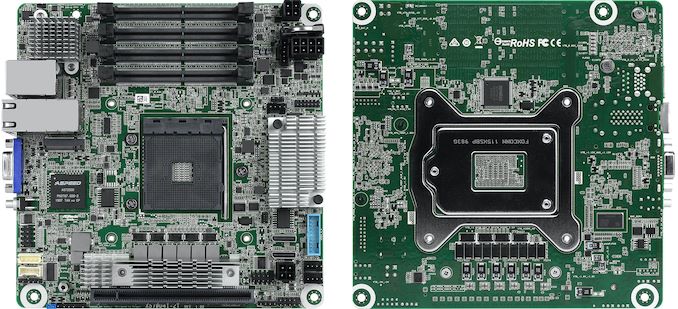
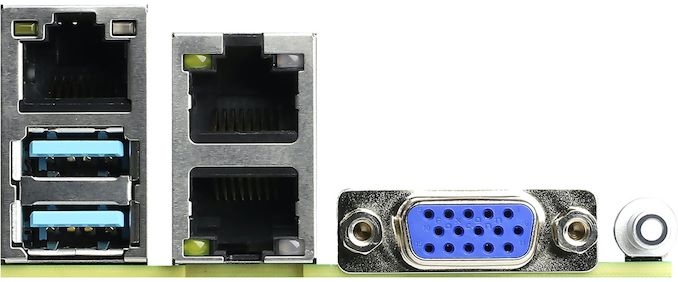

 Quote
Quote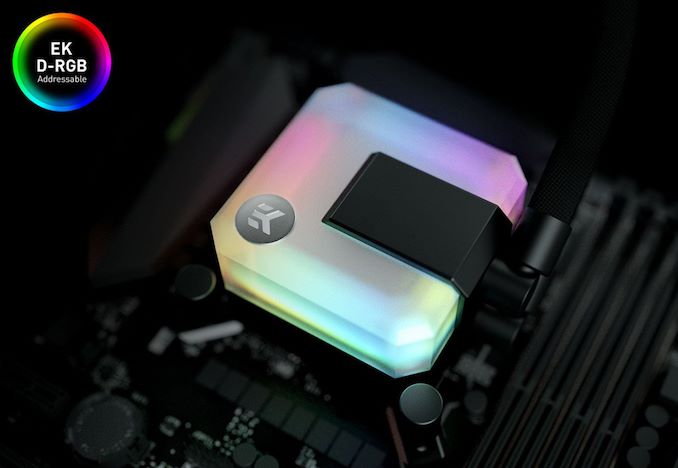
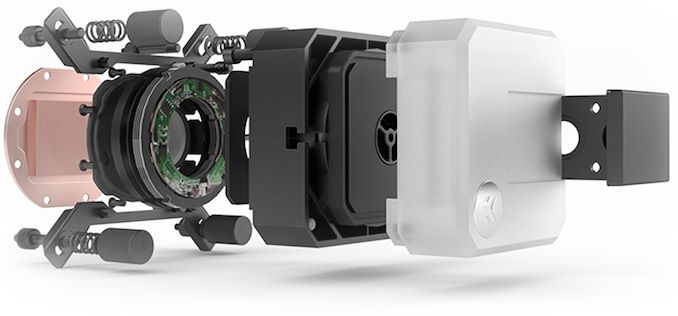
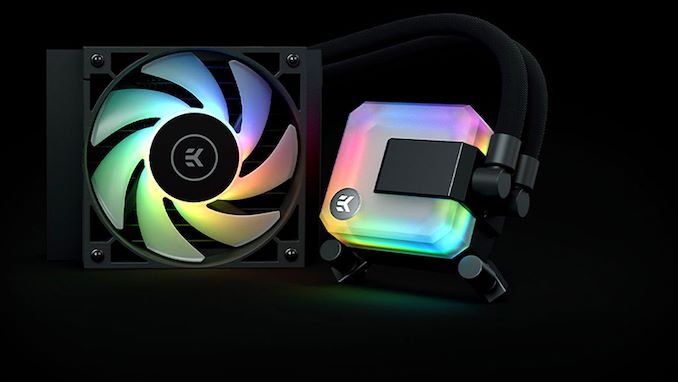
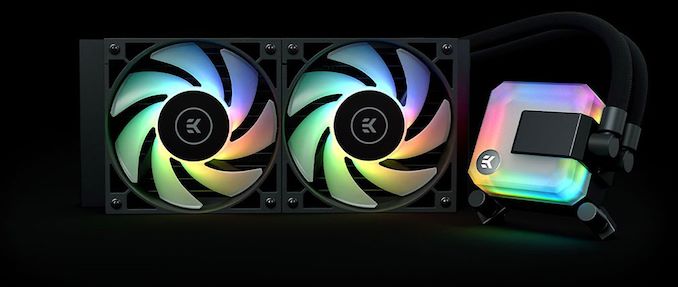
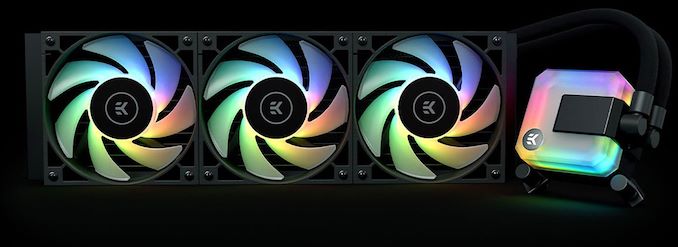

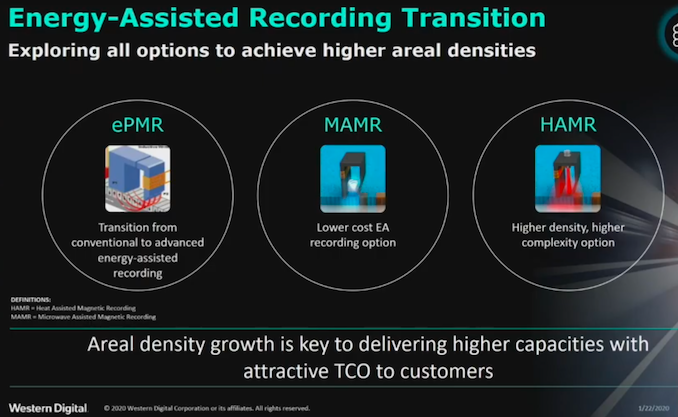
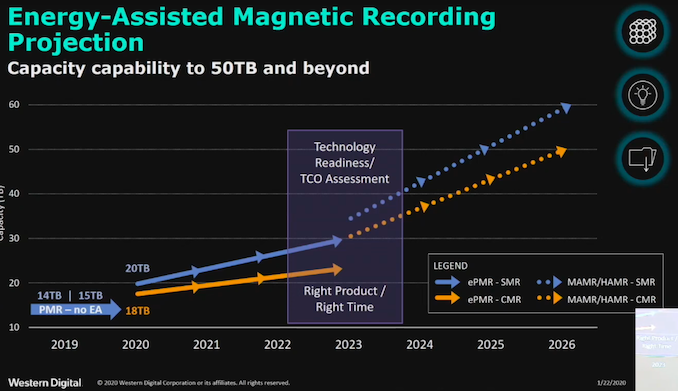
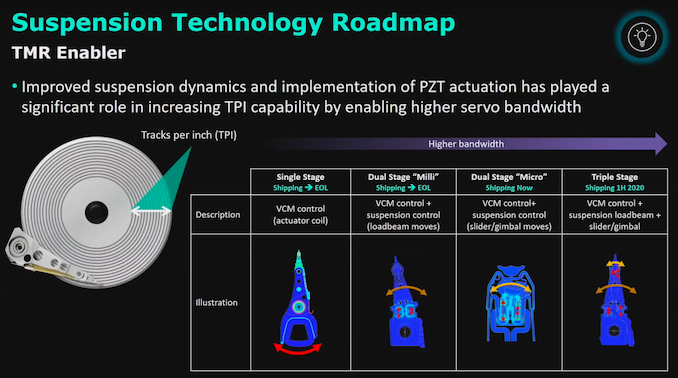

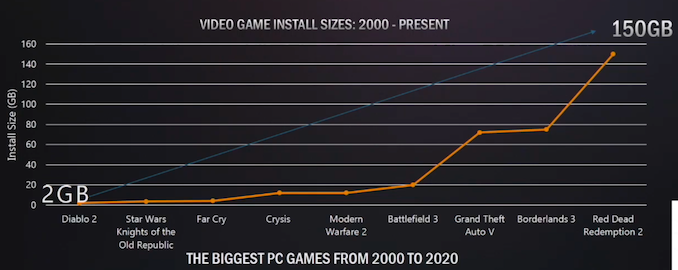

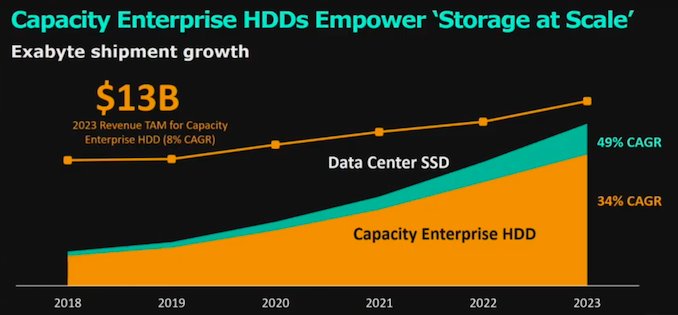

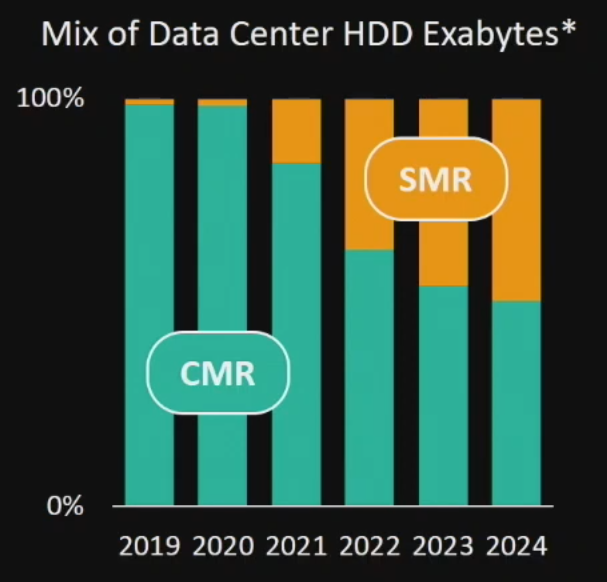
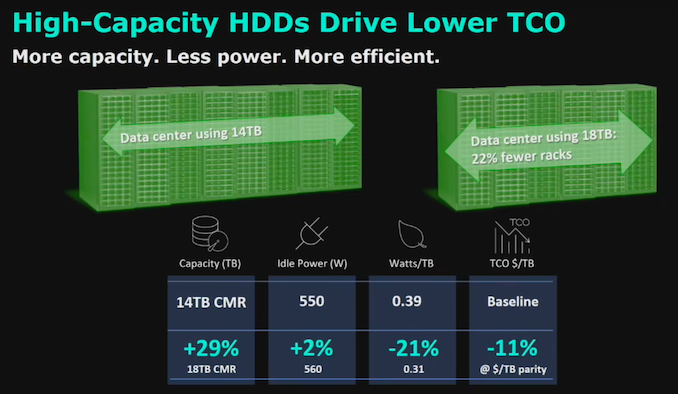
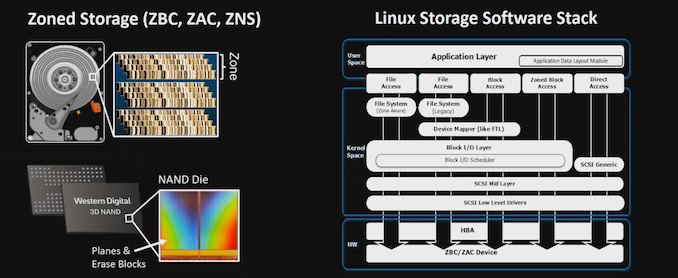




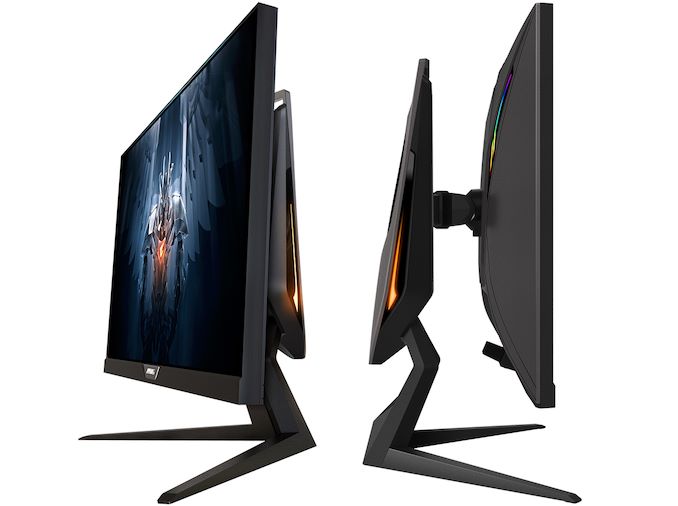

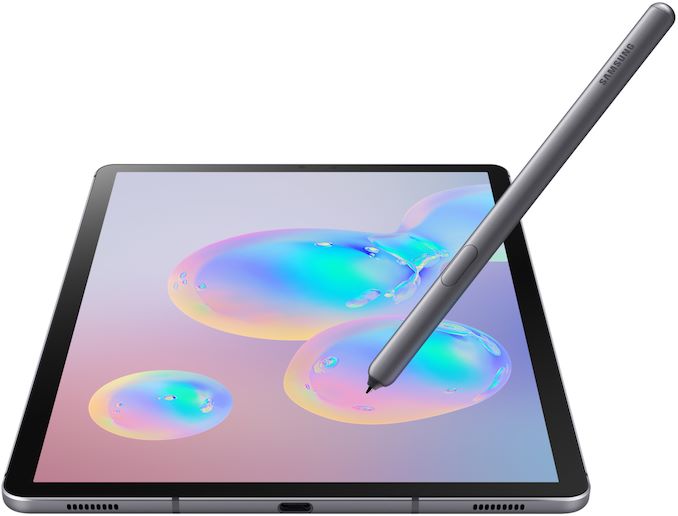

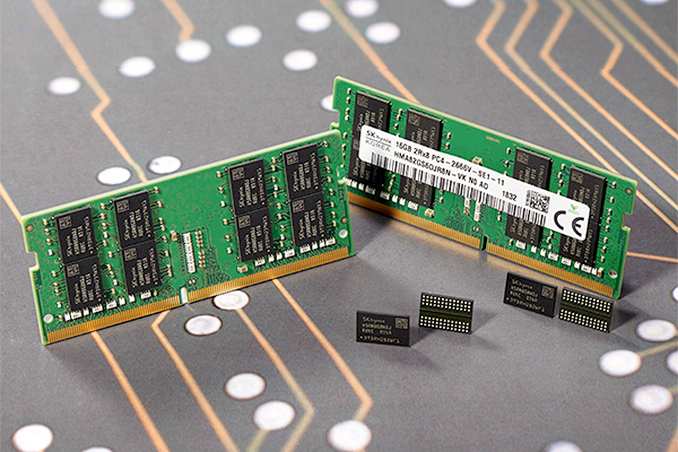
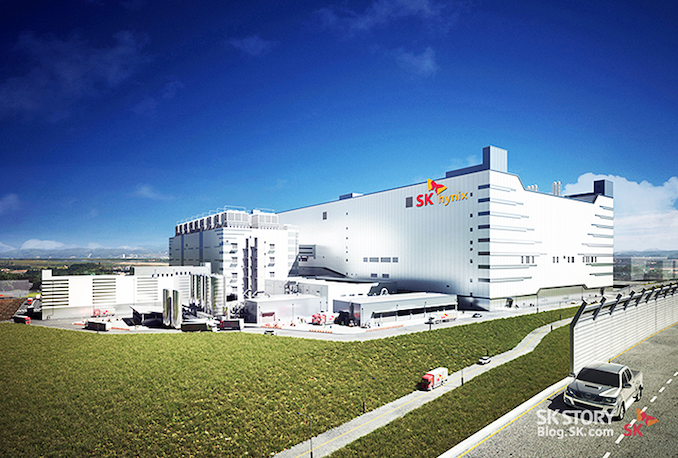
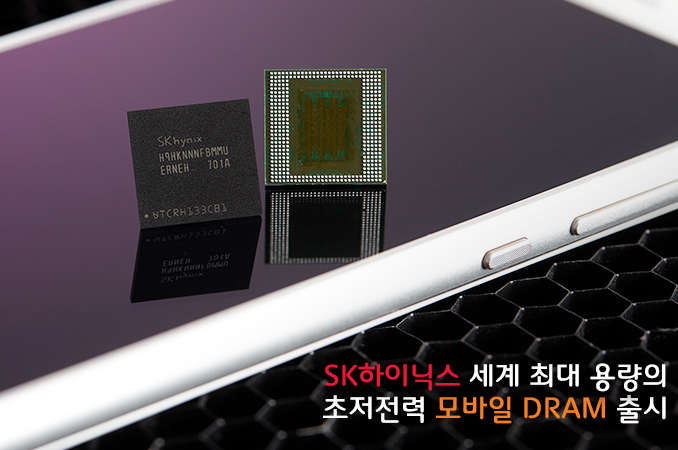
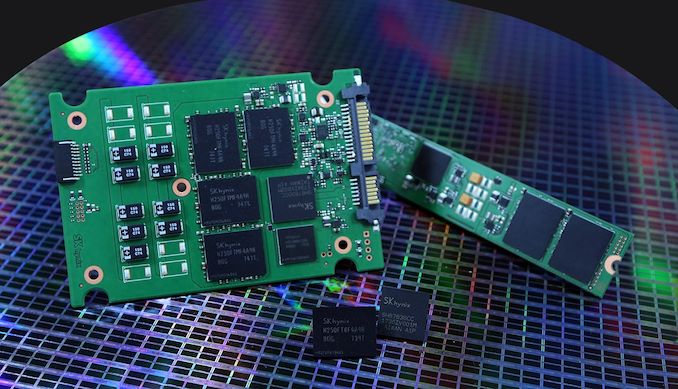
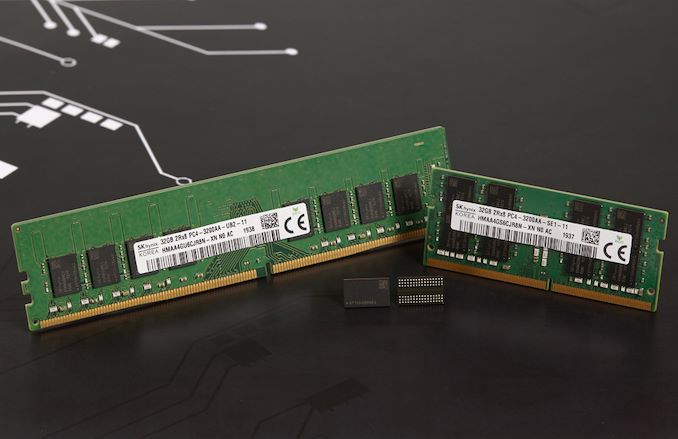

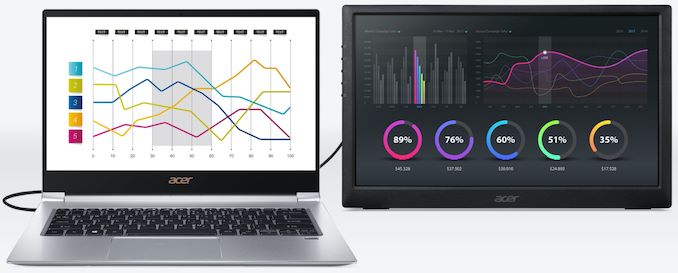

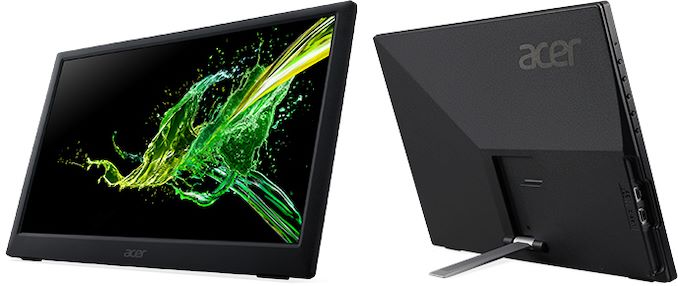
















Bookmarks